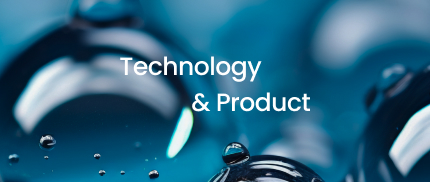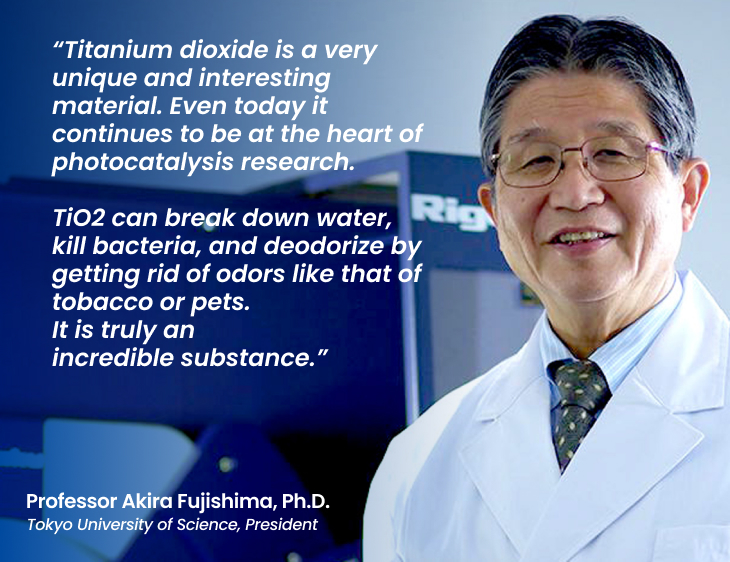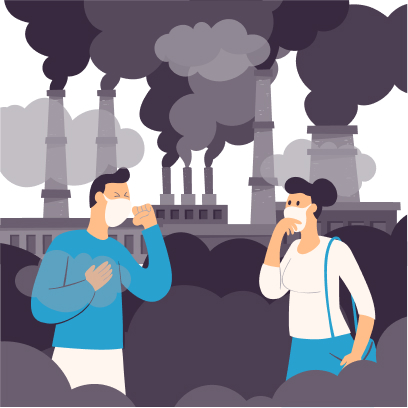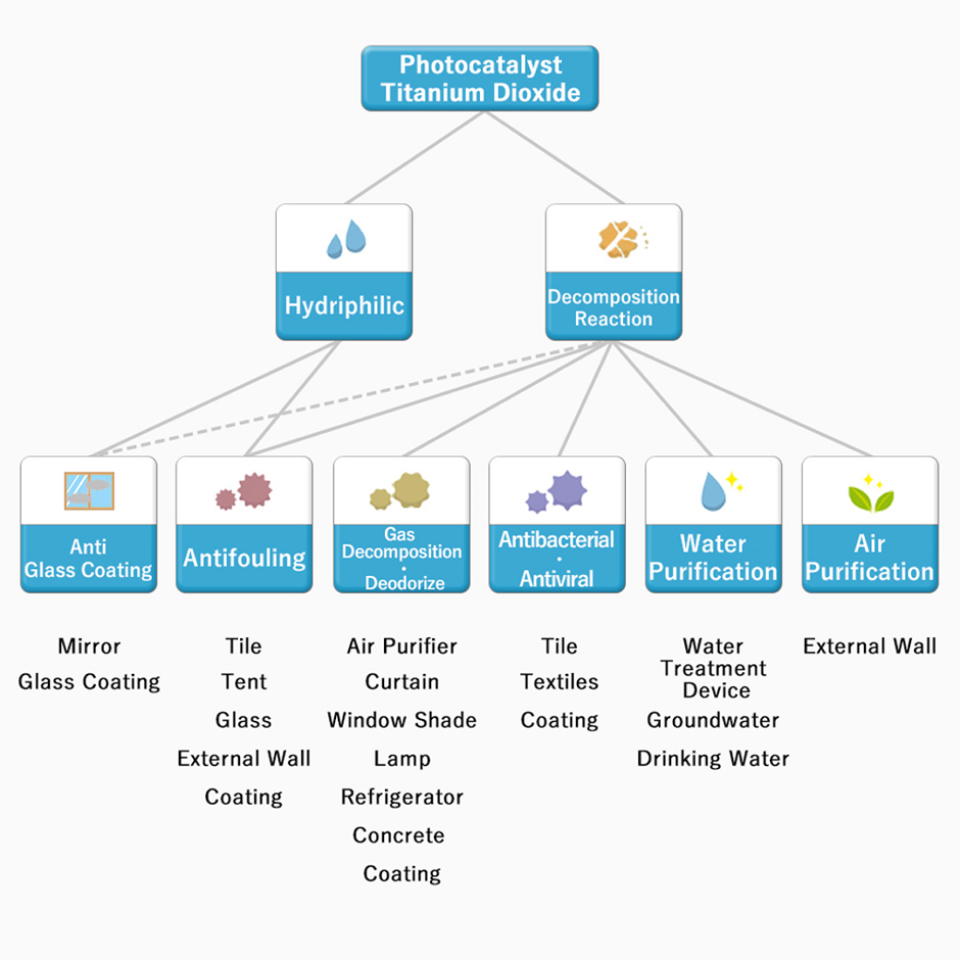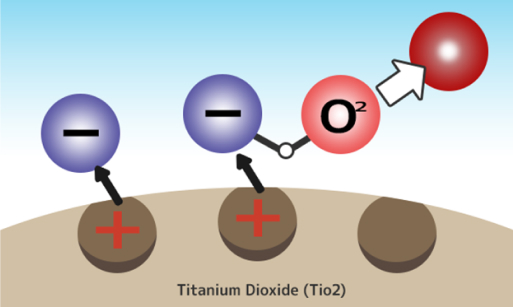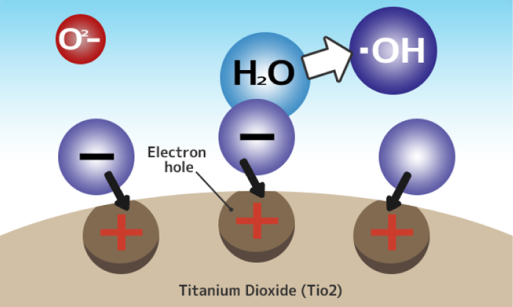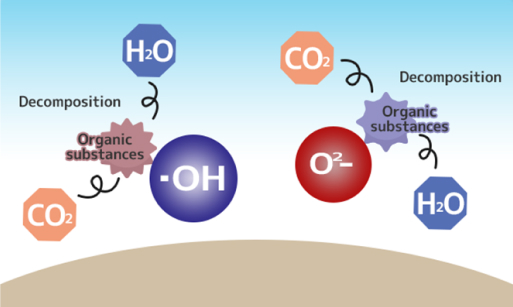Photocatalyst Technology
Photocatalyst resolves and detoxicates harmful substances with the power of light approaching to the surface coated by photocatalyst such as “the bad smell, tar dirt, bacteria, various germs, a Mold bacillus, virus, and the chemical substances cause of the sick house house syndrome, etc.,” that approach us while floating in the air.
A photocatalyst is a material that performs "decomposition power" and "hydrophilic properties" effects by exposing the light.There are various materials that show photocatalytic capability, and titanium dioxide is said to be the most effective. Titanium dioxide itself is harmless and is used for various purposes such as in cosmetic, food products. The decomposition system of photocatalyst film is sustainable. The coating film in itself life span is, theoretically, it’s semi-permanent function

